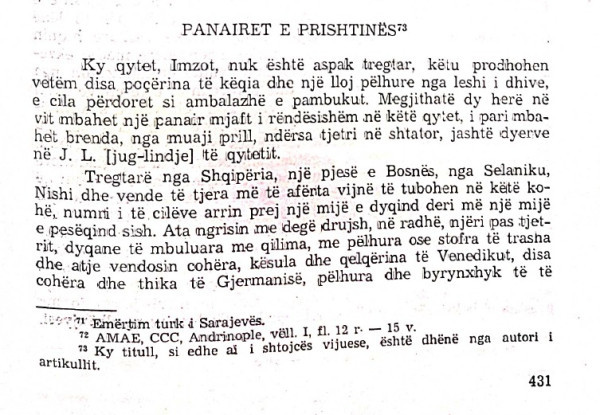1812, Antoine Vasse

Published papers
The city of Pristina is located in a lowland near the plain of Kosovo. It is criss-crossed with ditches and rusty railings. Approximately eight to nine thousand people live in it. It takes about a mile. It is very thickly walled and has many gardens. The houses are very low and almost entirely on the ground. Some of them are of the same paint. There are no monuments that would prove the antiquity of the city, except for a few ruins, which have nothing special. Christians say that they were built by Christians before the conquest of Sultan Murat. The city is not a market at all. Some very rude vessels of earthenware and rough stuff are made in it, which are used for packing cotton. However, beetroot festival is held twice a year in Pristina. The first in April inside the city, and the second in September, outside the city. Merchants from Albania, from a part of Bosnia, from Thessaloniki, from Drenopoli, from Nis and other nearby countries come during this time to Pristina, and gather in the amount of 1200 to 1500.
Source: Novakovic, St. (1896). Француске свечение белешке о заподно-балканским земљмаиз 1806-1813. In Споменик, Belgrade: Српске Краљевске Академије (30), p. 145–154; Collar, Ymer (1974). A diplomatic representation of Napoleon in Pristina. In Kosovo, Pristina, Institute of History (3), p. 413–434. Original documents: Archives of the Ministry of Foreign Affairs of France, Nantes. (Translation: Ymer Jaka.)